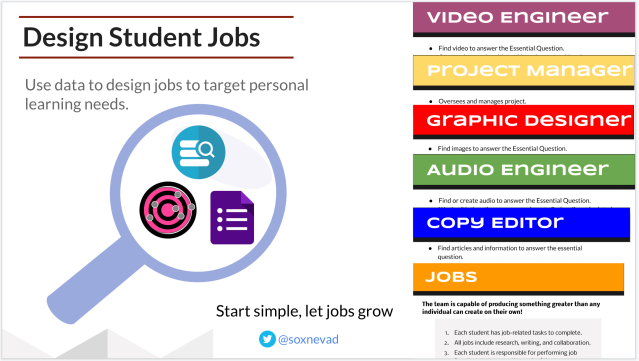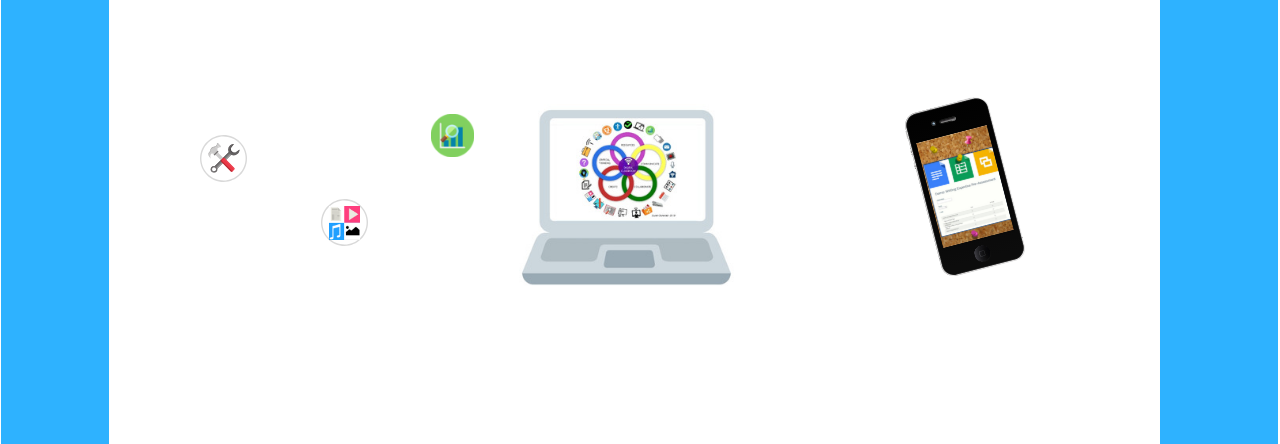With abundant access to data, schools can personalize learning to help each student demonstrate success in a standards-based learning environment. Educators who provide students with learning experiences based on the principles of Universal Design for Learning, UDL, can greatly boost the engagement of ALL learners, not just students with significant learning needs.

What is UDL?
Universal Design for Learning is an approach aimed at supporting the diverse needs of ALL learners in a classroom.
A UDL classroom is carefully crafted to provide ALL students with multiple opportunities for learning and growth. UDL principles suggest that learning experiences should provide students with Multiple Means of Representation, Action & Expression, and Engagement.

UDL fosters student engagement by presenting information in multiple ways and allowing students to demonstrate learning through diverse avenues of action and expression. Multimedia plays a significant role in the learning environment. It can be used as a compelling tool for presenting information and as a creativity tool for demonstrating learning and sparking innovation.
For a great overview of UDL, please watch this CAST video, UDL at a Glance
The UDL Guidelines

There are several resources available to help educators design learning experiences that meet the UDL guidelines and provide students with multiple means of representation, action & expression, and engagement. The UDL Guidelines are available in a variety of formats via the UDL Professional Learning website.
Putting the UDL Principles to Practice
One framework for putting UDL into practice is to design learning experiences that are
- Driven by standards-based essential questions.
- Guided by collaborative grouping strategies.
- Powered by a flexible toolkit.
Standards-Based Essential Questions
Essential Question can drive learning on multiple levels and allow students to generate a wide range of correct answers with varying degrees of complexity. There are no yes or no answers, just big questions that prompt inquiry, synthesis of information, and creativity. When combined with opportunities for students to collaborate and create something original, learning fueled by standards-based Essential Questions can foster the development of higher level thinking skills and help ALL students succeed.
Example of an Essential Question

How and why did people struggle for justice during the US Civil Rights Movement?
Collaborative Grouping Strategies
Use of collaborative grouping as a classroom management tool can help create a learning environment that is designed for ALL students to succeed. Incorporating elements of a workplace team environment can help students develop an understanding of their strengths as a learner and recognize their value as a team contributor. At the same time, student roles can be customized to target instructional needs and help them get past barriers. Use of roles can also provide students with clarity about performance expectations with opportunities for reflection and goal setting.

Start with Super Simple Jobs
Use of student jobs is a powerful classroom management strategy that keeps students focused and holds them accountable for their own learning and progress. Start by using classroom data to design jobs that target the instructional goals of the students in the room. Assign jobs to students based on personal learning needs. Schedule job meetings to teach students how to do their jobs. At the end of each meeting, assign students to a peer-editing team to put their skills to use.

Encourage collaboration among team members and those with similar job descriptions via their LMS, chat, or Google Docs to take advantage of immediate feedback and to spark creativity outside of the classroom.
A Flexible Toolkit
There is a great deal of potential for maximizing learning through engagement in a well-designed classroom that meets the needs of ALL learners. Flexible paths can help ALL students overcome learning barriers and learn how to use supports to meet their needs.
Educators who are regularly empowered through purposeful professional development, equipped with data, and have access to classroom technology can design learning experiences that support UDL, foster engagement, and lead to deep learning. in the Digital Classroom.

Join Our Webinar
Join me and Simple K12 as we provide an overview of digital tools and resources to design personalized learning experiences that effectively incorporate digital differentiation. Wednesday, April 24, 2019 @ 5:00 PM EDT

